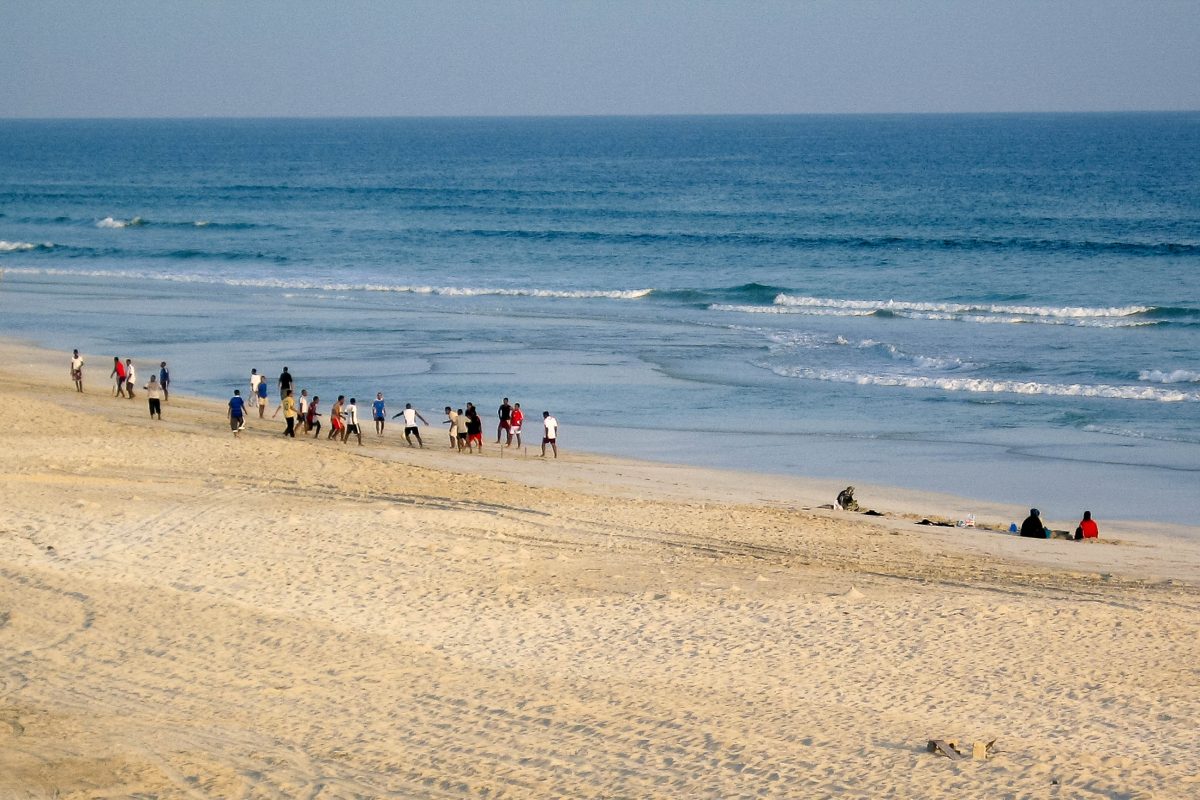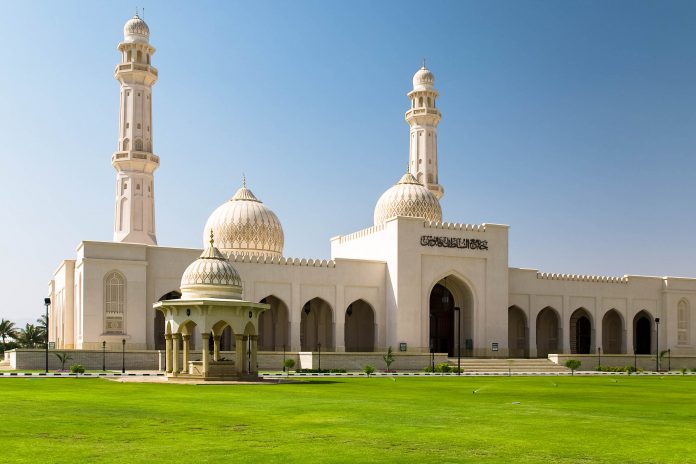Das nach Weihrauch duftende Salalah, die zweitgrößte Stadt im Oman, liegt ganz im Süden des Landes und lockt mit ruhiger Atmosphäre, fantastischen Tauchgründen und traumhaften Stränden. Einmal im Jahr verwandelt der Monsun seine Umgebung in ein blühendes Paradies.
Salalah, die Hauptstadt des südlichsten Landesteils Dhofar, liegt ganz im Süden an der Küste des Oman zu Füßen des Dhofar-Gebirges und ist die ideale Stadt, um sich mit allen modernen Annehmlichkeiten zu erholen. Salalah ist der ideale Ausgangspunkt um den Süden Omans zu erkunden. Nach Muskat ist Salalah die zweitgrößte Stadt im Oman und Geburtsort des Sultans Qaboos bin Said.
Salalah, im 13. Jahrhundert durch den Weihrauchhandel reich geworden, war schon immer die Hauptstadt des Dhofar-Sultanats und von 1932 bis 1970 sogar die Hauptstadt des Oman. Erst der neue Sultan Qaboos verlegte die Hauptstadt nach Muskat und besucht Salalah nur noch alle paar Jahre.
Inhaltsverzeichnis
Anreise nach Salalah
Die Anreise nach Salalah kann per Boot, Auto, Bus oder Flugzeug (etwa von Muskat oder den Vereinigten Arabischen Emiraten aus) erfolgen.
Die schnellste (ca. 1 Stunde Flugzeit) und bequemste Anreise erfolgt mit dem Flugzeug von Muscat. Mit dem Bus ist es empfehlenswert, in der Nacht nach Salalah zu fahren. Durch die brütende Hitze kann die 12stündige Reise von Muskat nach Salalah ziemlich anstrengend werden. Außerdem ist der Blick auf das beleuchtete Salalah in der Nacht absolut unvergesslich!
Wer selbst mit dem Auto fährt sollte die Strecke besser am Tag zurück legen, da Nachtfahrten durch Baustellen und das eine oder andere Kamel auf der Straße nicht ganz ungefährlich sind.
Salalah und der Khareef
Von Juli bis September geht in Salalah ein Ausläufer des Monsun, der so genannte „Khareef“, nieder. Wenn es auf der gesamten arabischen Halbinsel sonst über 40°C hat, ist es auf einem etwa 50km breiten Streifen ganz im Süden Omans nebelig und feucht. Im August bis Ende September verwandelt sich die Umgebung von Salalah in einen mit Blüten durchsetzten Garten Eden.
Jedes Jahr von Mitte Juli bis Ende August wird in Salalah das beliebte Khareef-Festival (auch als Salalah Tourism Festival bekannt) abgehalten. Vor allem am Wochenende geht hier die Post ab und Hotels müssen weit im Voraus gebucht werden.
Sehenswürdigkeiten von Salalah

Strandurlauber, Tauchfreunde und Kulturliebhaber sind im geruhsamen Salalah gleichermaßen willkommen. Kokospalmen, Bananenstauden und der schier endlose Sandstrand von Salalah vermitteln paradiesisches Urlaubsflair. Dies hat dem Strand von Salalah einen Platz auf der Liste unserer 10 schönsten Strände im Oman beschert.
Vor der Küste warten spektakuläre Korallenriffe und faszinierende Schiffswracks auf Taucher. Die Chance ist außerdem relativ hoch, dass der Strand von Salalah von Delfinen heimgesucht wird. Tropische Früchte wie Bananen, Mangos und Papayas werden direkt vom Baum verkauft und schmecken unvergleichlich frisch und saftig.
Archäologische Stätte Khor al-Baleed

Am antiken Hafen in der Khor al-Baleed im Osten von Salalah wurde über viele Jahrhunderte hinweg vor allem Weihrauch umgeschlagen. Durch die Exporte aus Asien ist der Weihrauchhandel heute jedoch kaum mehr von Bedeutung. Auf der Landzunge al-Baleed sind heute noch die Überreste einer mittelalterlichen Siedlung zu finden. Der zugehörige Archäologiepark entstand aus den Ausgrabungen, die im Jahr 1995 von der UNESCO in Auftrag gegeben wurde.
Im benachbarten Weihrauchmuseum werden nicht nur die Geschichte des kostbaren Räucherwerks, sondern auch die religiöse und historisch-politische Vergangenheit des Oman dargestellt. Ein weiterer antiker Weihrauchhafen ist Sumhuram in Khor Rori, er liegt allerdings etwa 40km außerhalb der Stadt in östliche Richtung.
Stadtteil al-Haffah
Der Stadtteil al-Haffah liegt westlich von Khor al-Baleed. Hier sind noch einige traditionelle Kalksteinhäuser erhalten, wie sie vor hunderten von Jahren gebaut wurden. Auch der modernisierte Souq, in dem es an allen Ecken und Enden nach Weihrauch riecht, lädt hier zum Flanieren ein.
Weihrauchbrenner führen hier vor Ort ihre Herstellungskunst der duftenden Kostbarkeit dar und zaubern die besten traditionellen Weihrauchmischungen. Die so genannten „bokhur“ werden oft in unscheinbaren alten Gläsern oder Kosmetikdosen verkauft.
Al-Hisn Sultanspalast
Hinter dem Souq erstrecken sich der Sultanspalast und die königlichen Verwaltungsgebäude. Der Al-Hisn Sultanspalast fungiert als Sommersitz des amtierenden Sultans Qaboos. Für Touristen ist der spektakuläre Herrschersitz leider nicht zugänglich. Nur wenn der Sultan gerade anwesend ist, stehen die Tore der hohen Palastmauern vielleicht offen und gewähren einen Einblick in das Anwesen.
Museum von Salalah
Hinter dem Sultanspalast führt die Al-Nahdah Street nach Norden bis zu einem Kreisverkehr. Rechts davon liegt das Ministry of National Heritage and Culture, das auch das Museum von Salalah beherbergt. Hier werden die Forschungsreisen des britischen Entdeckers Wilfred Thesiger vorgestellt, der unter anderem in der Rub al-Khali unterwegs war.
Auch Ausstellungsstücke der dhofarischen Kultur könnt ihr hier bewundern. Darunter finden sich historische Schriften, antike Münzen, Silberschmuck, Weihrauchbrenner, Flechtwaren und einige Steintafeln mit altsüdarabischen Schriftzeichen, die in der antiken Stadt Sumhuram gefunden wurden.
Khor Salalah
Im Westen von Salalah nach dem Sultanspalast liegt die Lagune von Khor Salalah, die zum Vogelschutzgebiet erklärt wurde. Der Meeresarm wird durch einem Maschendrahtzaun von der Bevölkerung abgeschirmt und bietet Reihern, Möwen, Enten, Kormoranen und einigen Pelikanen einen sicheren Lebensraum.
Port of Salalah
Auch der moderne Containerhafen Mina Raysut im Westen von Salalah ist sehenswert. Er entwickelte sich zusehends zum Zentrum der omanischen Industrie und zählt zu den größten Arbeitgebern in der gesamten Provinz Dhofar. Für den Handel zwischen Afrika, dem mittleren Osten und Asien ist der Hafen von Salalah eine bedeutende Drehscheibe. Der Tiefseewasserhafen, der seit 1998 existiert, wird auch von Containerschiffen und Kreuzfahrtschiffen angelaufen.
Sultan-Qaboos-Moschee
Die Sultan-Qaboos-Moschee wurde im Jahr 2009 eingeweiht. Unübersehbar thront sie im Stadtzentrum von Salalah. Nicht-Muslime dürfen sie leider nicht betreten, doch alleine ihre prachtvolle Fassade ist sehenswert!
Grab des Propheten Nabi Amran
Auch für Nicht-Muslime zugänglich ist hingegen des 30m lange Prophetengrab des Nabi Amran. Allerdings müssen wie in einer Moschee die Schuhe ausgezogen werden und Frauen müssen ihren Kopf bedecken.
Ausflüge von Salalah
Mughsayl

Etwa 20 Kilometer westlich der Stadt entlang der As-Sultan-Qaboos-Street No.47 liegt der paradiesische Sandstrand von Mughsayl, der ebenfalls zu unseren 10 schönsten Stränden im Oman zählt. Der kilometerlange Küstenstreifen lädt zum Picknicken ein und auch ein Restaurant ist vorhanden.
Vom Parkplatz des Restaurants führt eine Treppe auf einen Fels hinauf, in den die Brandung im Lauf der Jahrtausende so genannte Blow-Holes geschaffen hat. Durch diese Löcher im Gestein schießt das Meerwasser vor allem bei starker Brandung während des sommerlichen Charifs bis zu mehreren Metern hoch.
Mausoleum von Nabi Ayup (Hiob)
Das Mausoleum von Nabi Ayup, der auch unter dem Namen Hiob bekannt ist, liegt knapp 20 Kilometer nördlich von Salalah. Der Weg zum Mausoleum führt durch eine faszinierende Landschaft. Hiob wird sowohl in der Bibel als auch im Koran erwähnt. Seine letzte Ruhestätte darf von allen Besuchern egal welcher Konfession betreten werden.
Ob hier der legendäre Heilige allerdings tatsächlich begraben liegt, steht in den Sternen. Bei stichhaltigen Beweisen wäre das wunderbare Plateau mit der fabelhaften Aussicht mittlerweile bestimmt zu einer bedeutenden Pilgerstätte geworden.
Weiterführende Links:





